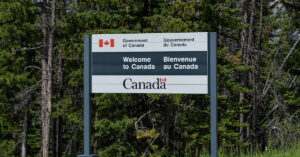 |
It was the best of times, it was the worst of times. With apologies to Charles Dickens and his Tale of Two Cities, that line could easily describe Canada’s current labour market.
Poor headlines and public perception around the Temporary Foreign Worker Program led Ottawa to announce plans, back in June, to crack down on abusers and overhaul the program. Among the changes included a shift to using wage levels rather than National Occupation Codes (NOC) as the main criteria for determining low-wage versus high-wage work — the logic being that wages constitute a more accurate reflection of occupational skill level and local labour market conditions.
The Labour Market Impact Assessment Fee was increased from $275 to $1,000 and the proportion of foreign workers an employer could use is now capped at 10 per cent of the employer’s work force. Applications will be refused for low-wage, lower-skill occupations in economic regions with an unemployment rate of six per cent or higher.
Late last month, the federal government posted a discussion paper on the Employment and Social Development website stating that employers who flout the new rules could face a permanent ban on hiring them. Other penalties include one-, five- and 10-year bans on applying for foreign workers. Proposed fines range from $500 to a maximum of $100,000.
Alberta has 68,000 temporary foreign workers and the premier said Ottawa’s tweaking is already hitting home.
In B.C., Premier Christy Clark called the changes “tragically misdirected.” Her province is on the cusp of a huge expansion in the liquefied natural gas industry, something that will require a lot of labour to get rolling. In a speech to the Vancouver Board of Trade, she put the spotlight on one of the uglier sides of the objections swirling around temporary foreign workers — a general opposition to immigration.
For its part, Ottawa isn’t budging. It has made it clear it has no plans to back away from the recent changes.
Source: HR Reporter
Attorney Colin Singer Commentary:
This is a clear case where the government manages the immigration portfolio largely as a political tool rather than devising meaningful policies to address Canada’s real labour market needs. In 2012 this government implemented new policies under the TFWP permitting employers to pay foreign workers 90% of the prevailing wage rate. Now fast forward 2 years and the government suddenly turns 360 degrees and imposes restrictive measures that more than offsets previous requirements while holding orchestrated media productions to trumpet how tough they are in “protecting” Canadian hires. During this period Canada’s unemployment rate has fallen from 7.5% to 6.5%.

